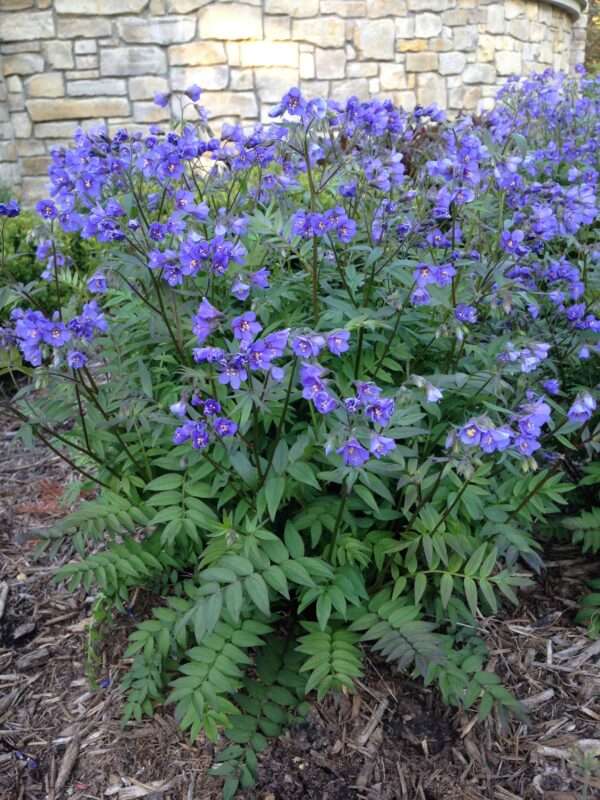
Description
Greek valerian, or Jacob’s ladder (Polemonium caeruleum), is a woodland-type wildflower with lovely bell-shaped flowers that are distinctively deep blue in color. The name “Jacob’s ladder” comes from the leaves’ pinnate compound resemblance to a ladder that the biblical Jacob saw in a dream. This perennial plant is a transient wildflower that blooms in the spring. Its low-lying blooming stems have a tendency to droop to the side, creating the appearance of a spreading plant.
Habitat
Its range is from Georgia to Mississippi in the south, and from Minnesota to New Hampshire in the north. West of the Appalachian Mountains is where you can find the majority of it.
Uses
Medicine is made from the portions that grow above the ground. People who have fever and swelling (inflammation) use Jacob’s ladder. They also use it as an astringent to dry up tissues and encourage sweating.

Varieties
Polemonium caeruleum ‘Album’: The flowers on this cultivar are white.
P. caeruleum ‘Bambino Blue’: This variety is adorned with exquisite light blue blooms.
Polemonium caeruleum ‘Snow and Sapphires’: This cultivar, which has blue blooms and variegated leaves, is a little harder to handle than Polemonium reptans ‘Brise d’Anjou,’ another cultivar of the same plant.
P. reptans ‘Stairway to Heaven’: This variety’s variegated foliage blushes pink in cool weather, and it has blue flowers.
Plant Care
- Light
Partial or dappled shade is preferred by Jacob’s ladder plants. As long as the soil is kept constantly moist, dark green leaf cultivars may withstand more direct sunlight than variegated ones.
Soil
Loose, fertile, well-draining soil that stays damp but not soggy is ideal for planting Jacob’s ladder. Although it is more sensitive to moisture than soil pH, it thrives on soil that is either slightly acidic or somewhat neutral in pH.
- Water
Regular watering will prolong the bloom and keep Jacob’s ladder plants beautiful well into the summer. To keep medium moisture levels, water frequently, but keep the area from becoming too wet. You might need to water your plants more frequently during dry spells to keep them lush.
- Temperature and Humidity
Greek valerian can become damaged by intense heat in warm southern gardens; it likes a comparatively cold summertime temperature. Powdery mildew and fungal illnesses called leaf spot can occur in extremely humid environments.
- Fertilizer
In early spring, when new growth is starting to emerge, give the plants a boost with a dosage of balanced fertilizer. After cutting back the faded blossoms, feed them once more.
Table





